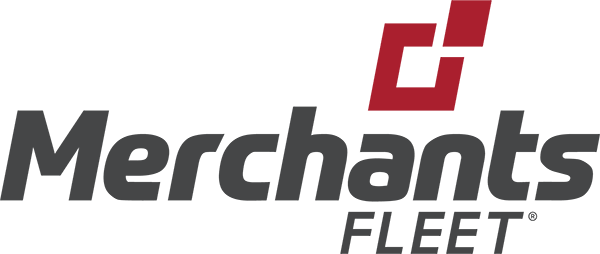Compliance: Medium & Heavy-Duty Commercial Vehicles
When working with a fleet that includes medium and heavy duty commercial motor vehicles (CMVs), you’ll quickly find that regulation compliance is a critical part of your operations. While the federal agencies that put these regulations into effect have good intentions, it’s easy to get overwhelmed with the various departments, regulations, and reports you’ll encounter.
Merchants Fleet stays on top of these federal agencies and the updates they make so that our clients can remain compliant as they operate their business.
In this post we’ll go through compliance agencies, registration, licensing, taxes, and more. Knowing about these moving parts, and staying informed of regulatory changes, can help protect your organization from costly fines and liability.
What is Compliance and Why Does It Matter?
Medium and heavy duty CMV compliance generally refers to adhering to the requirements of the U.S. Department of Transportation (DOT) and the Federal Motor Carrier Safety Administration (FMCSA). These federal agencies enforce the rules which govern the operation of CMVs. Organizations that don’t comply with the rules and regulations can face steep fines and could potentially be putting their drivers and the public in danger.
These are some of the most important factors as to why your fleet should always stay in compliance:
Reduces Risk
An effective compliance program can help our business mitigate risks by preventing possible events from detrimentally affecting our operations.
Greater Efficiency
A comprehensive policy and compliance management program can help increase business efficiencies.
Business Strategy Alignment
Understanding the strengths and weaknesses of our business, as well as the opportunities and threats it faces, can assist us in driving new strategies to grow our business.
Brand Reputation
Trust is a foundation element in building a successful business. Clients trust us to provide them with goods and services, and in today’s online w
orld, keep their confidential data safe.
Breaking Down the Regulatory Agencies
What is DOT COMPLIANCE?
The Department of Transportation’s (DOT) mission is to deliver the world’s leading transportation system, serving the American people and economy through the safe, efficient, sustainable, and equitable movement of people and goods.
To stay DOT compliant, complete pre and post-trip inspections of vehicles with documentation, develop a vehicle maintenance program and adhere to it and ensure each vehicle is marked with its DOT registration number. You will also need to maintain a record of any road incidents for each vehicle.
What is FMCSA COMPLIANCE?
Federal Motor Carrier Safety Administration (FMCSA) is the lead federal government agency responsible for regulating and providing safety oversight of commercial motor vehicles (CMVs). FMCSA’s mission is to reduce crashes, injuries, and fatalities involving large trucks and buses.
FMCSA has their own safety compliance and enforcement program called CSA, which stands for Compliance, Safety, Accountability.
Registration & Licensing
You will need to follow the requirements of your state, province, or jurisdiction to register your vehicle locally. If you plan to operate your vehicle across state or international lines, you may need to register with other organizations, such as the IRP.
What is the IRP?
IRP is an agreement between the lower 48 states of the United States and the Canadian provinces. When you register a commercial truck, you must pay fees in every state that truck runs through. The amount of fee you pay is based on the percentage of miles you operate in each state.
The IRP Governs the Registration for Large Commercial Vehicles Meeting the Definition of an Apportionable Vehicle
What is an Apportionable Vehicle?
Any vehicle which is used in two or more member jurisdictions and that is used for the transportation of persons for hire or maintained primarily for the transportation of property/goods, and:
- Has two axles and a gross vehicle weight or GVWR in excess of 26,000lbs, or
- Has three or more axles, regardless of weight, or
- Is used in combination, when the GVWR of such combination exceeds 26,000lbs
Are There Any Exceptions?
Recreational vehicles, vehicles displaying restricted plates, or government-owned vehicles are not required to obtain apportioned registrations.
Optional: Trucks or truck tractors, or combinations of vehicles having a gross vehicle weight of 26,000 pounds or less.
Fuel & Tax
At one time, truckers were required to get fuel permits from each state on their route. This requirement made the process of calculating and distributing fuel taxes a burdensome, inefficient task. But the creation of the International Fuel Tax Agreement (IFTA) allows US states and Canadian provinces to get their fair share of fuel use taxes as well as creating uniformity, accountability, and efficiency across all CMV drivers.
Who is IFTA?
The International Fuel Tax Association, Inc., more commonly known as IFTA, Inc., is an agreement between the lower 48 states of the United States and the Canadian provinces, to simplify the reporting of fuel use by motor carriers that operate in more than one jurisdiction.
An operating carrier with IFTA receives an IFTA license and two decals for each qualifying vehicle it operates. The carrier files a quarterly fuel tax report. This report is used to determine the net tax or refund due and to redistribute taxes from collecting states to states that it is due.
What Vehicles Qualify for IFTA?
Qualified Motor Vehicles are motor vehicles used, designed, or maintained for transportation of persons or goods and:
- Have two axles and registered gross vehicle weight in excess of 26,000lbs, or
- Have three or more axles, regardless of weight, or
- Are used in combination, when the weight exceeds 26,000lbs GVWR
- Qualified Motor Vehicles DO NOT Include Recreational Vehicles
IFTA works as a “pay now or pay later” system.
- As commercial motor vehicles buy fuel, any fuel taxes paid are credited to that licensee’s account.
- At the end of the fiscal quarter, the licensee completes their fuel tax report, listing all miles traveled in all participating jurisdictions and lists all gallons purchased.
- Then the average fuel mileage is applied to the miles traveled to determine the tax liability to each jurisdiction.
- Any amount of fuel taxes due (or refund) is then paid to (or received from) the base jurisdiction who issued the license.
- The member jurisdictions then take care of transferring the funds accordingly.
Example for a trucking company based out of Florida:
Safety – Roadside & CSA
Whether you’re a motor carrier or driver your role is vital to safety on the road.
Who is CSA?
CSA is FMCSA’s data-driven safety compliance and enforcement program.
Compliance Safety Accountability (CSA)
is the Federal Motor Carrier Safety Administration’s safety compliance and enforcement program designed to improve safety and prevent commercial motor vehicle crashes, injuries, and fatalities. CSA consists of three core components; the Safety Measurement System (SMS); interventions; and a Safety Fitness Determination (SFD) rating system to determine the safety fitness of motor carriers.
The SMS uses data from roadside inspections and crash reports from the last two years, and data from investigations to identify carriers with safety performance and compliance problems for interventions.
Motor Carriers are Given a Percentile Score that Compares Carriers to their Peers.
ROADSIDE INSPECTIONS
CMV roadside inspections are performed to help fulfill the FMCSA’s mission by ensuring that large trucks and buses are up to certain regulations which in turn helps to keep our roadways safe. Inspections that result in serious violations place drivers and/or vehicles under Out-of-Service Orders.
DRIVER VEHICLE INSPECTION REPORTS
(DVIR / Pre-Trip)
Before operating the vehicle, the driver must inspect the vehicle and be satisfied that it is in safe operating condition. If the last vehicle inspection report notes any deficiencies, the driver must review and sign to acknowledge and certify that the required repairs were made.
Driver Vehicle Inspection Reports (DVIR / Post-Trip)
Drivers of CMVs must inspect vehicles, prepare and sign a written report at the completion of each day’s work on each vehicle operated. The report shall cover at least the following parts and accessories and must list any defect or deficiency discovered which would affect the safety of operation of the vehicle or result in its mechanical breakdown.
- Service brakes, including trailer brake connections
- Parking (hand) brake
- Steering mechanism
- Lighting devices and reflectors
- Tires
- Horn
- Windshield wipers
- Rear-vision mirrors
- Coupling devices
- Wheels and rims
- Emergency equipment
Driving & Operating a CMV

States issue CDLs and CLPs (Commercial Learner’s Permit) to drivers according to the following license classifications:
Class A
Combination Vehicle
Required for any combination of vehicles with a gross combination weight rating (GCWR) of 26,001 pounds or more provided the GVWR of the vehicle(s) being towed is in excess of 10,000lbs
Class B
Heavy Straight Vehicle
Required for any single vehicle with a GVWR of 26,001lbs or more, or any such vehicle towing a vehicle not in excess of 10,000lbs GVWR.
A DOT Medical Exam is required with a CDL (Commercial Drivers License) to operate a CMV. These exams are valid up to 2 years and renewable.
Class C
Small Vehicle
Required for any single vehicle, or combination of vehicles, that meets neither the definition of Group A nor that of Group B, but that either is designed to transport 16 or more passengers including the driver or is used in the transportation of hazardous materials as defined in § 383.5
Class D
Operator License
An operator license is what most people think of as a “regular” driver license. It authorizes an operator to drive a vehicle with a GVW of 26,000 pounds or less. May tow a trailer with a GVW of 10,000lbs or less but cannot transport hazardous materials or drive a bus designed to transport +15 persons
Hours of Service / ELD
Hours of Service refers to the maximum amount of time drivers are permitted to be on-duty, including driving time, and specifies number and length of rest periods, to help ensure that drivers stay awake and alert. In general, all carriers and drivers operating commercial motor vehicles (CMVs) must comply with HOS regulations.
Electronic Logging Devices (ELDs) are intended to create a safer work environment for drivers of commercial motor vehicles, and make it easier and faster to accurately track, manage, and share data on driving and off-duty time.
Inspection, Repair & Maintenance
Every motor carrier shall systematically inspect, repair, and maintain all motor vehicles subject to its control. Parts and accessories must be always in safe and proper condition.
REQUIRED RECORDS
Every motor carrier shall maintain the following record for each vehicle:
- An identification of the vehicle including company number (if so marked), make, serial number, year, and tire size.
- A means to show the nature and due date of the various inspection and maintenance operations to be performed.
- A record of inspection, repairs, and maintenance showing their date and type.
ROADSIDE INSPECTION REPORTS
A copy must be retained on file by the motor carrier for 12 months from the date of the inspection.
DRIVER VEHICLE INSPECTION REPORTS
Drivers are required to complete a daily written post-trip inspection report at the end of each driving day. The motor carrier must maintain the original copy for three months.
Maintenance
ANNUAL INSPECTIONS
Every commercial vehicle requires periodic inspection that must be performed at least once every 12 months.
CMV INSPECTOR QUALIFICATIONS
Brake Inspector Qualification – The motor carrier is responsible for ensuring that all inspections, maintenance, repairs, and service to brakes of commercial motor vehicles comply with these regulations.
Qualifying Brake Training or Experience – Qualifying brake training or experience includes successful completion of an approved training program to perform brake service or one year of brake-related training, experience, or combination of both.
Maintaining Evidence of Brake Inspector Qualifications – Motor carriers must maintain evidence of brake inspector qualification. Evidence must be retained for the period during which the brake inspector is employed, and for one year thereafter.







